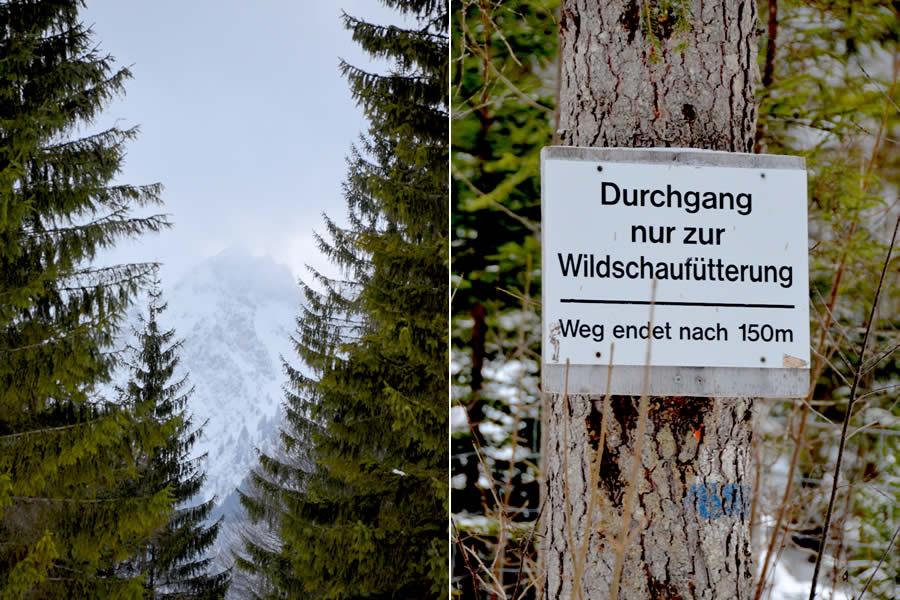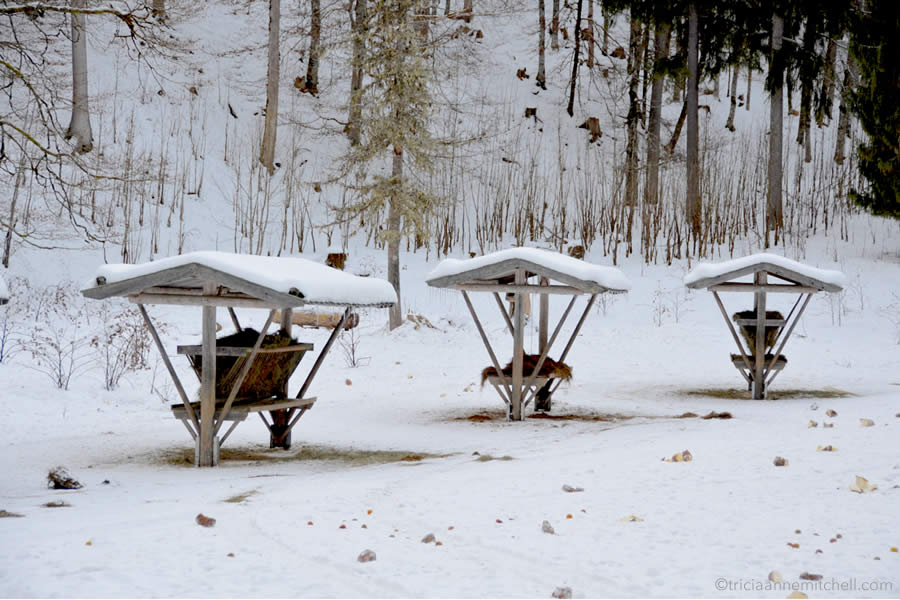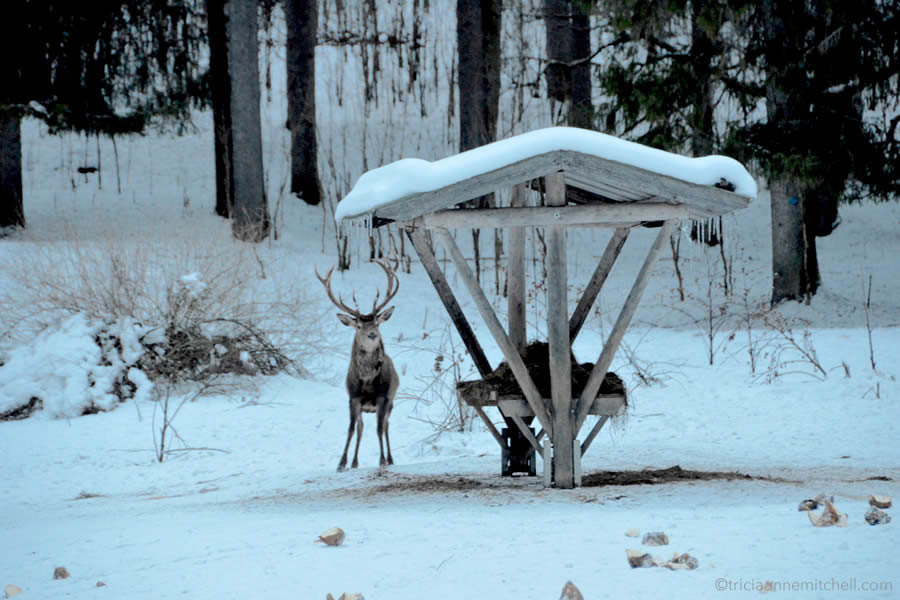Sitting on the wooden benches of a rustic shelter, our group waited patiently. We shivered quietly and watched for signs of life in the frosted forest before us. It was twilight, and we had come to watch a feeding of wild deer in the Graswang Valley in the German state of Bavaria. These feeding sessions, called Wildtierfütterung in German, are a popular local tradition, and just one example of Germany’s penchant for respecting the environment
During the harshest winter months, Bavarian authorities help care for the deer inhabiting these forested mountains by offering them food. They do so not only to help the deer survive the winter, but also to ensure the animals don’t devour too much of the forest’s foliage. Previously, the deer would have come into the valley to forage independently, but because some of their habitat has been developed by humans, the Wildtierfütterung is a necessary intervention.
As we huddled to stay warm, the professional hunter hosting the event peered through binoculars directed toward the evergreen forest. All was quiet.
“Oh dear,” we joked. “I don’t think any will come today.” I could feel my fingers and toes turning to popsicles. I was happy I’d taken my mother’s advice to wear long underwear and multiple layers of wool clothes.
Suddenly, my mom let out a squeal of delight. “I see one,” she exclaimed.
Moments passed, and soon more silhouettes of deer became visible in the distance. One-by-one, they slowly made their way down the snowy mountain slope to tiny wooden huts overflowing with mounds of hay. Calorie-packed beets had also been scattered over the frozen earth. The animals’ feeding stations looked similar to those at German Christmas markets. The only things missing were cheery people, hearty fest food, and steaming mugs of Glühwein.
About 50 deer eventually emerged from the forest to eat. Males with colossal antlers came the closest to the viewing stand, while more skittish females and younger deer devoured feed in the background. As the sun continued to set, the light transitioned from all-white to a bleached powder blue.
After 20 or 30 minutes, the herd of deer suddenly began dramatically scurrying off, as if they had been summoned by a voice in the forest. And then, all was again quiet in the valley.










Watch a Video of This Experience
Where in the World?
Planning Pointers:
- This event was held in the Graswang Valley (Graswangtal), in Upper Bavaria (Oberbayern). The feeding site is just a few kilometers from the village of Oberammergau, which is known for its Passion Play and gingerbread-like homes featuring traditional painting.
- Feedings take place from December until March. See this Ammergauer Alps Tourism blog post as well as this one for more details. The website is in German, but translates easily with Google Translate.
- We parked at the Parkplatz Schattenwald (see Google Map above), and then walked about 15 minutes through the forest to the feeding location. Follow signs that say Wildtierfütterung, which translates to ‘wild animal feeding’. Note that there was a rustic wooden outhouse nearby, which looked quite charming with its heart adornment, but it was frozen shut. Hot coffee and other diuretics are not recommended prior to. :)
- When we attended in January 2017, the entrance fee was €3 for adults, and €1 for children.
- Are you looking for a guesthouse or hotel in Oberammergau? Here is my round-up of hotels organized by theme.
- My Germany guide indexes all my posts from Germany, including glimpses of Heidelberg (where I lived for 10 years), a Bavarian horse-blessing ceremony, and an autumn visit to Neuschwanstein Castle.
Photography & text © Tricia A. Mitchell. All rights reserved. My husband, Shawn, created the video.


Leave a reply to newlifeduringmidlife Cancel reply